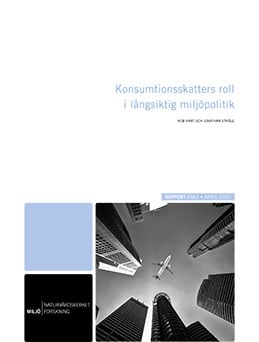The role of consumption tax in long term climate politics

About this report
There are several reasons why we should link policy instruments and consumption, of which we focus on two. The first reason is that in many cases there are obstacles to pricing polluting emissions – for example, to tax emissions from international flights, agreements are required that have so far proved unattainable – and thus other instruments must be examined, including instruments specifically aimed at consumers. And the second reason is that there are problems specific to consumption decisions that need to be corrected. These problems, which are known as consumption externalities, arise when the consumer’s own benefit is affected by the fact that she sees what others are consuming, and by the fact that others see her consumption. If consumption of conspicuous goods gives status, consumption can be driven upwards in a zero-sum game without a winner, but with an innocent loser: the environment. We analyse policy instruments and consumption in these two cases, and draw four main conclusions:
- A transition to clean technology is the most important mechanism for reducing emissions, and the best instrument for achieving such a transition is pricing of emissions through, for example, emissions taxes.
- Consumption taxes do not provide incentives for such technology transitions, but in certain circumstances other instruments – for example, a ban on dirty technology choices – can achieve the same effect as pricing of emissions.
- When a transition to clean technology is not feasible in the short run, consumption taxes in line with environmental damages can be a viable alternative to pricing emissions in order to reduce emissions in a socially efficient way.
- If consumers’ choices of environmentally harmful products – for example passenger flights – are greatly influenced by social factors such as competition for status, much more powerful consumption-oriented instruments may be justified.
